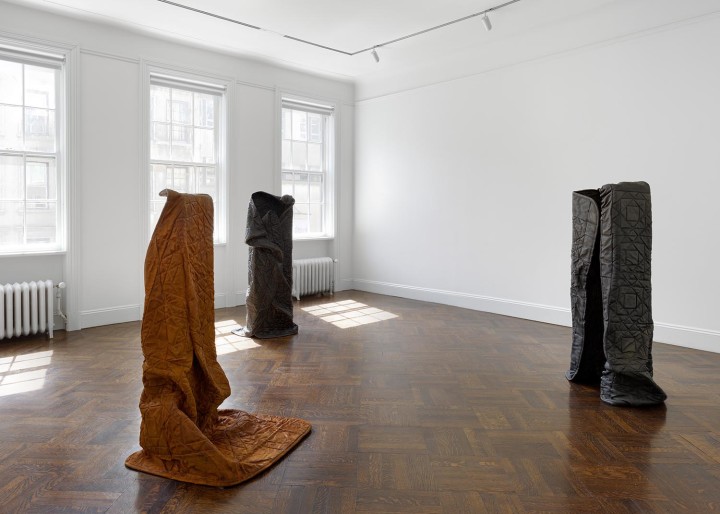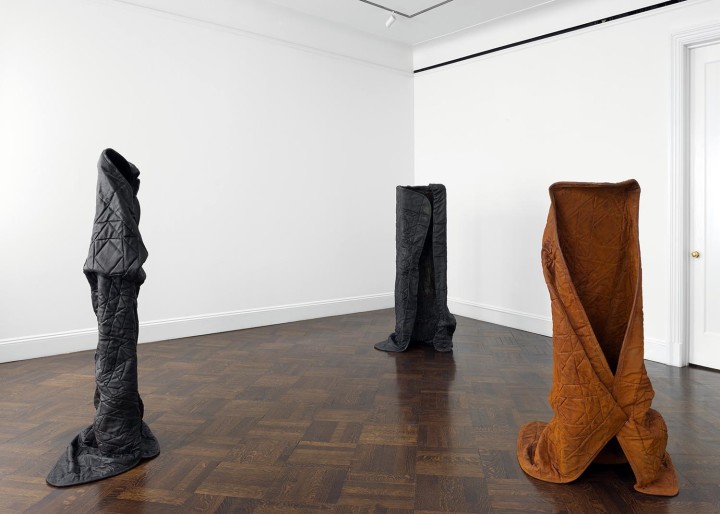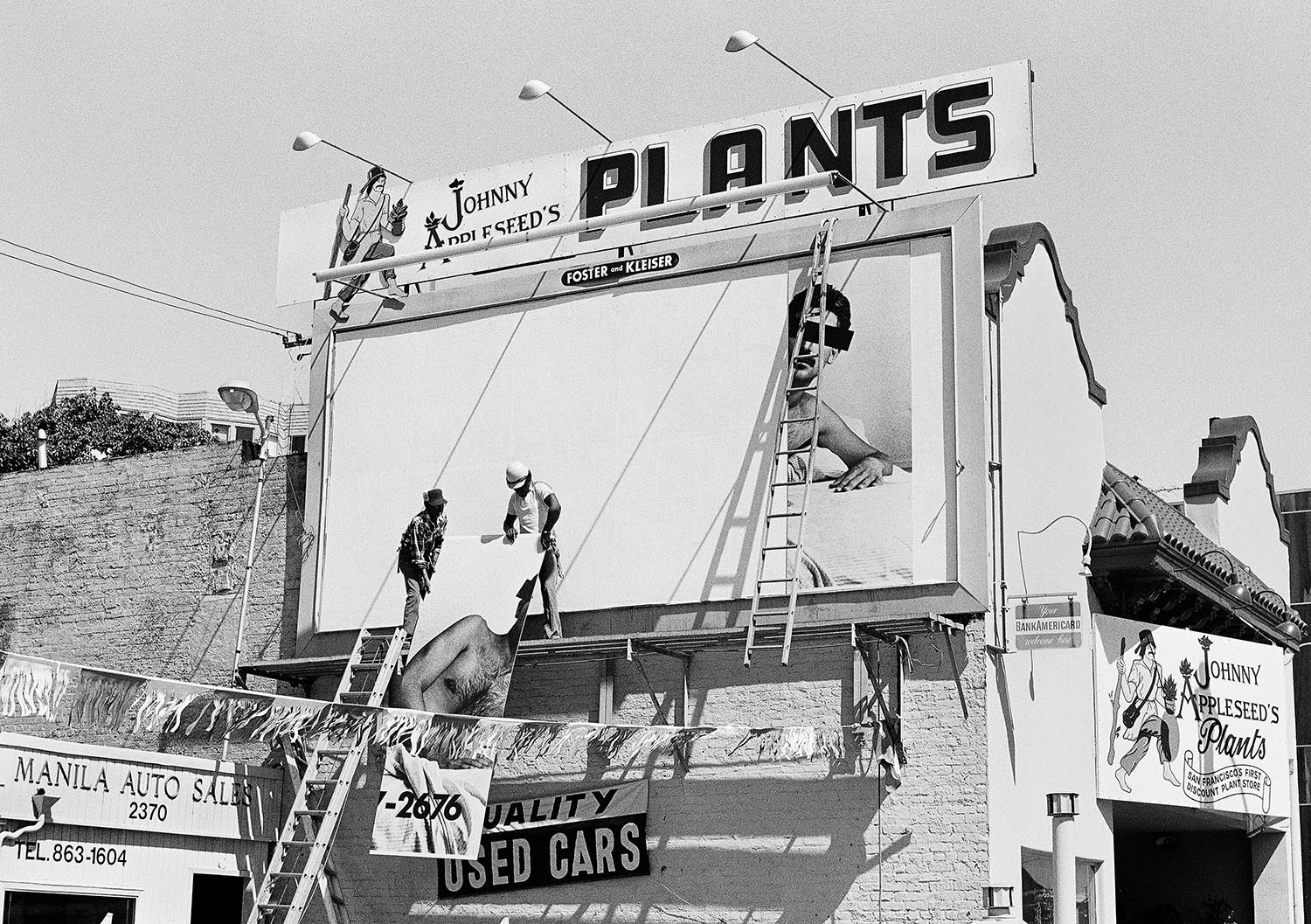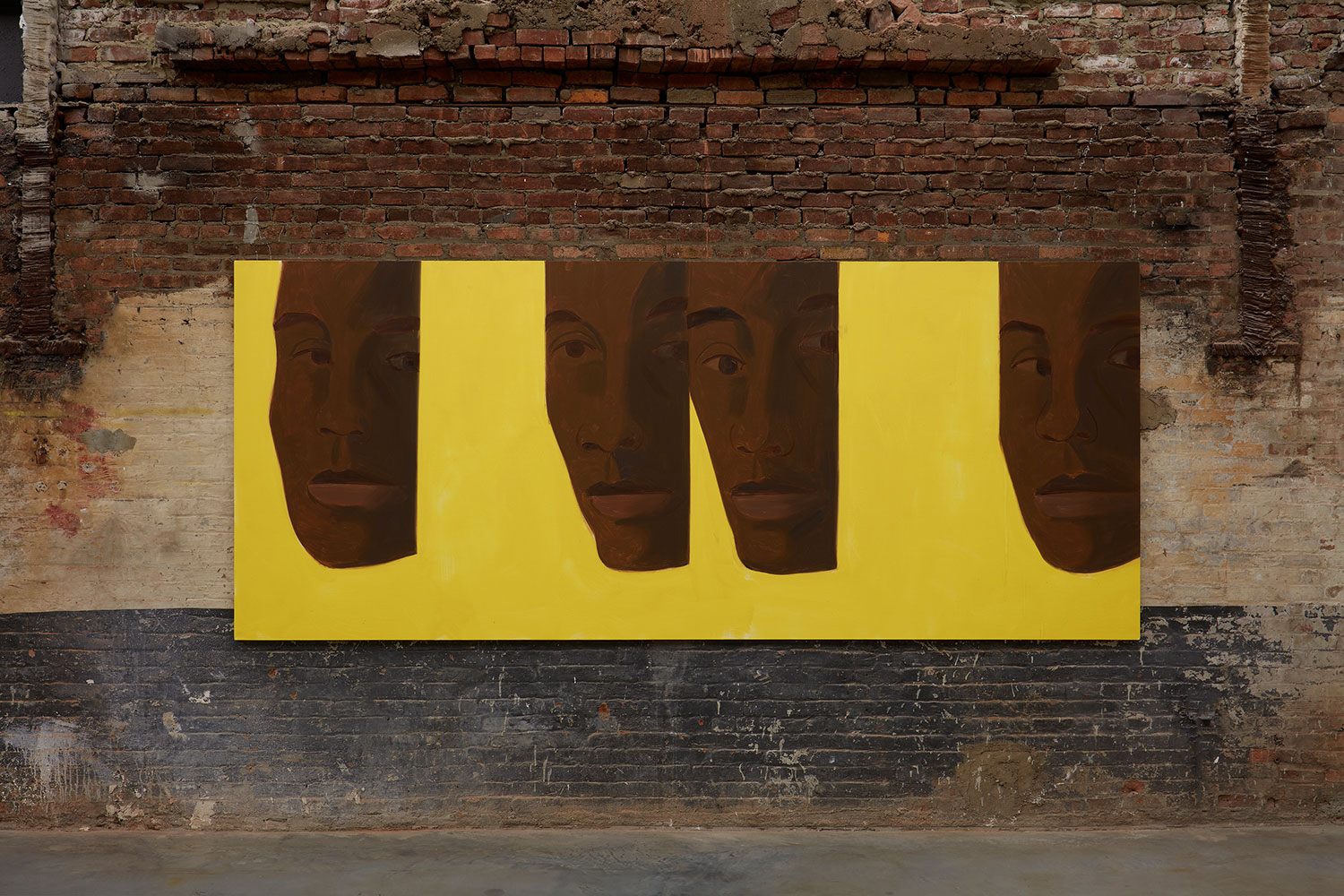There are no bodies in Gavin Kenyon’s exhibition at Blum & Poe New York — only their contours in the garments that cover, seal and protect them. Titled “Shrouds,” the show draws on the burial tradition of using cloth as an obscuring veil between the looker and the mourned body, which in turn is only visually registered through its material registration onto fabric.
Paradoxically, three free-standing sculptural works immediately undo this logic of material concealment: large, cast-iron quilted blankets suggesting the anthropomorphic contours of a figure reveal upon inspection a cavernous inside, a negative, body-less space. With their carefully rusty patina, these iron “wraps” provoke a trompe l’oeil effect in their mimicry of fabric and the pillowed texture of quilted garments.
In the north gallery, a single totemic sheet-metal pillar (Untitled, 2017) sculpturally reiterates the familiar yet mysteriously named “gentleman’s fancy block” quilting pattern taken up by Kenyon throughout his works. Arranging metal sheets in various states of erosion like mosaics, some covered in a frazzled lacquer and others seemingly brand new, they echo the nonlinear form of history writing traditionally associated with the quilting tradition. At his debut at Calvin Klein, designer Raf Simons recently evoked the quilt as one of the strongest symbols of American design history. It is both kitsch and ambivalent in its overlapping of the nation’s many narratives of indigeneity, slavery, religion, industrial capitalism and women’s work. Which bodies are lost, and which ones leave traces? How is folklore usurped and ejected from a wider national history of craft — only to find itself reified as post-minimalist artwork in the white cube? The only named sculpture, Penitent (2016–17), offers a suggestion but ultimately leaves the viewer pondering in front of patterns that are at once beautiful, cryptic and ubiquitous.
Subtler are the smaller wall-based works in cast iron and bronze in the upper galleries, which do not produce whole representations as much as fleeting imprints of bodies once there. A crease, a fold, a frill turn into three-dimensional haptic images, frozen in time. In the hands of Kenyon, quilting (literally) unfolds as a lyrical device for marking material time, both remembered and forgotten.




